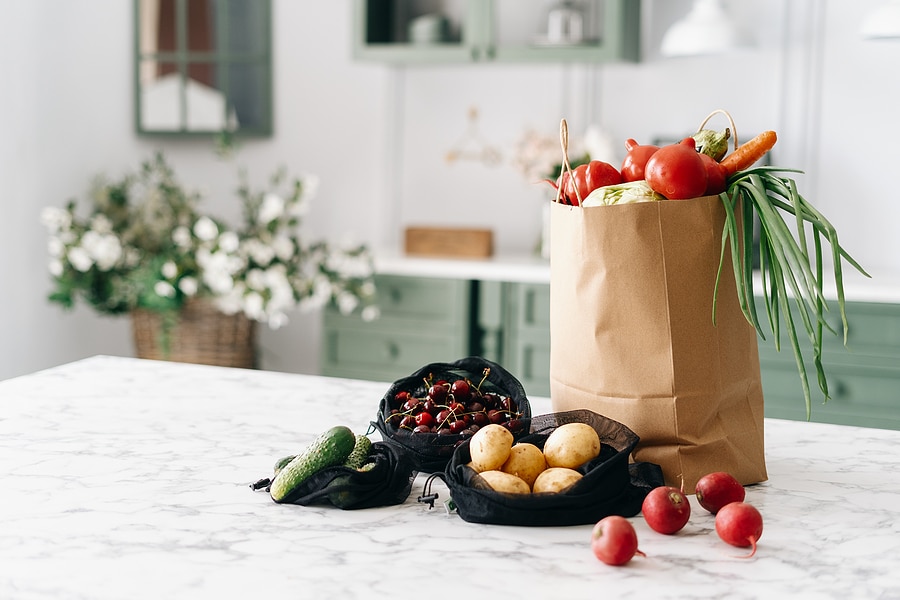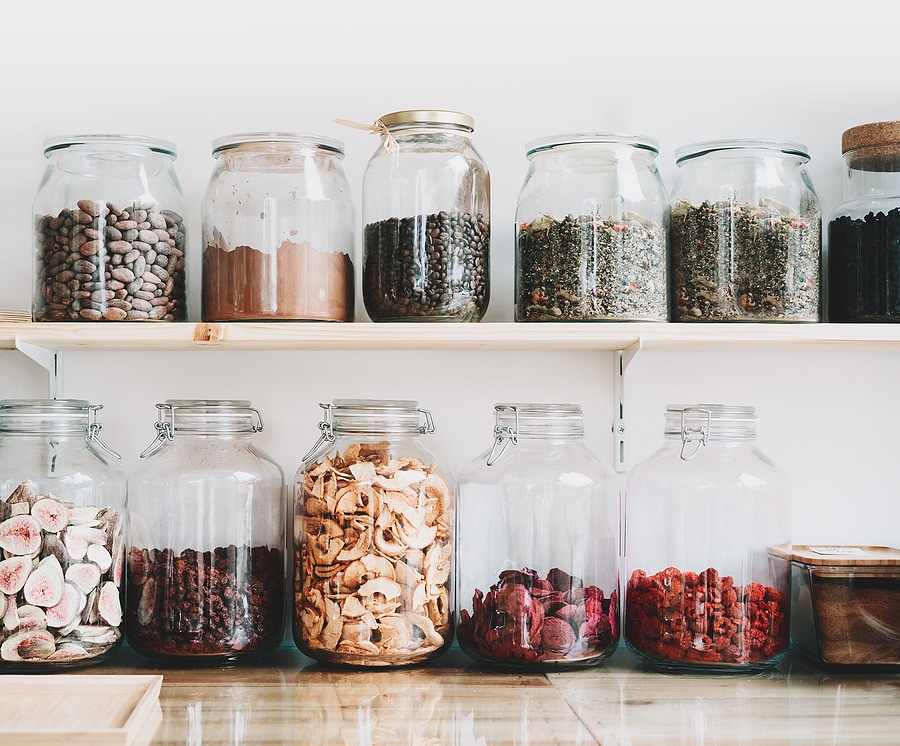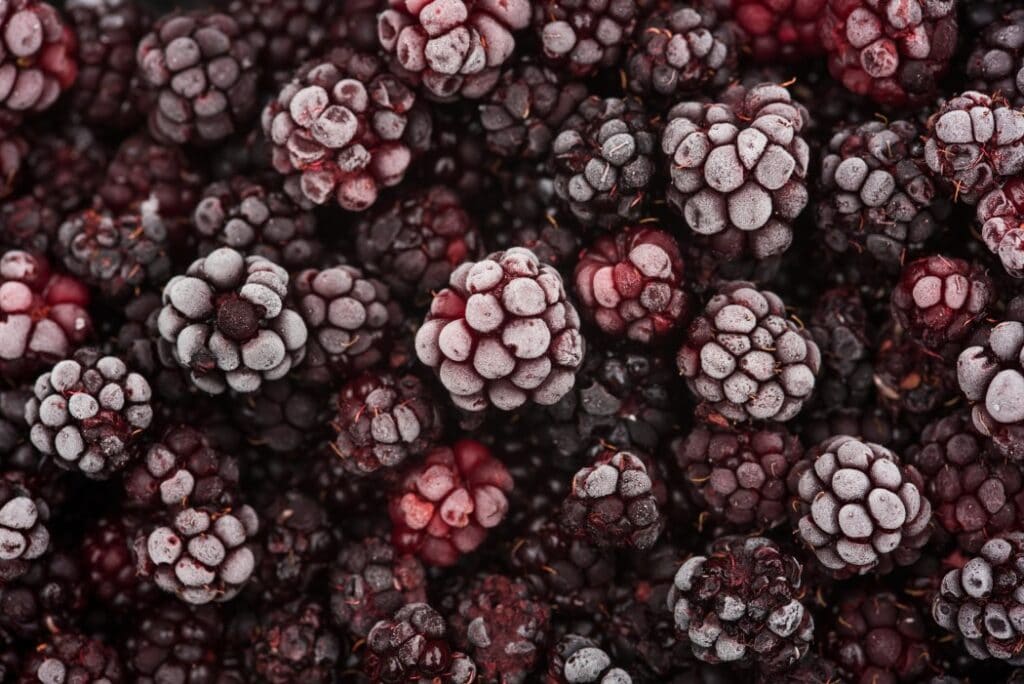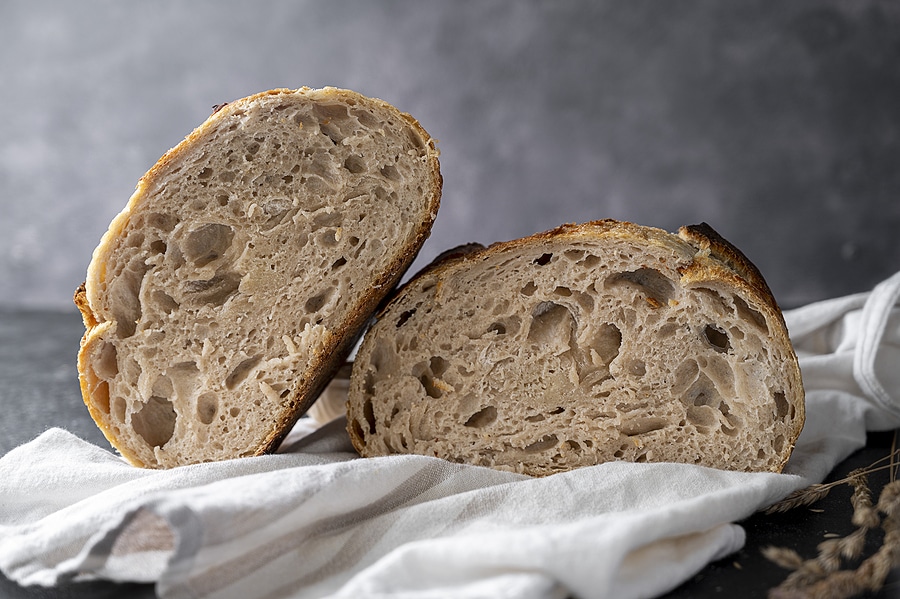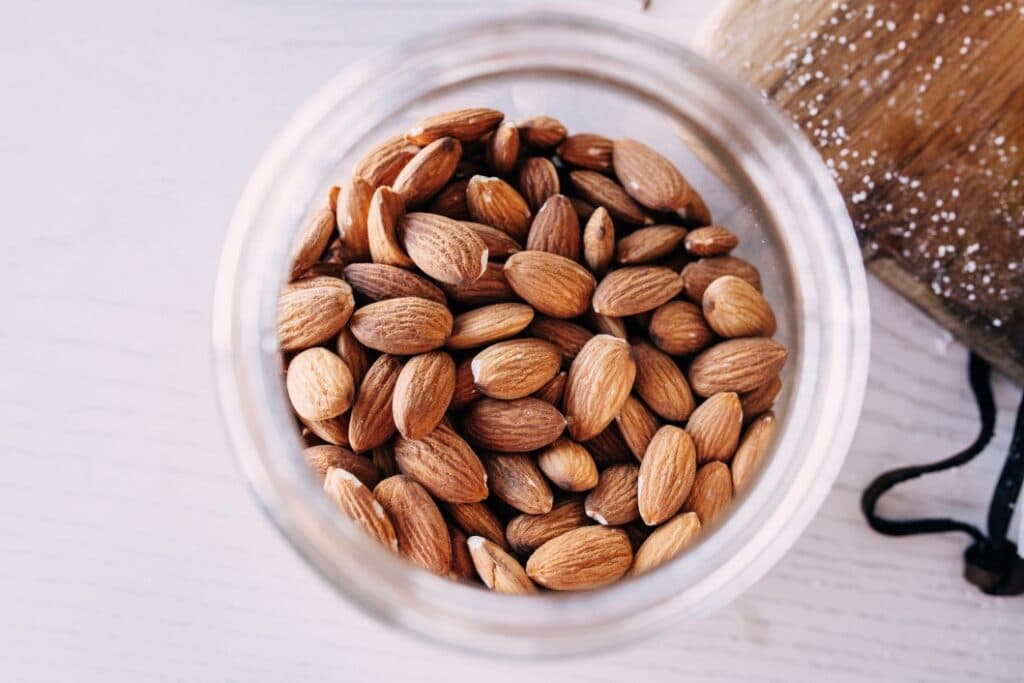With the rising costs of food, I hope you can benefit from reading my best tips and tricks on how to eat healthy food on a budget!
“It’s too pricey to eat healthy” is a common rhetoric today in society.
It is true that in some cases good quality foods are in fact pricier than lesser quality foods, however, that’s not always the case. And I’m going to offer you several work-arounds!
I want you to know that it’s possible to eat healthy, nourishing, whole foods while still stretching your dollar.
Here are my top 25 ways to eat healthy food on a budget:
1. Eat real food.
But what exactly is real food? Real foods are plant and animal foods that are whole and not processed. Typically, these types of foods are found on the perimeters of the grocery store.
They’ve been grown in the ground or come from an animal as opposed to being made and packaged in a factory.
To get a great general overview for what a real food, nutrient dense diet might look like, check out this article.
Real, whole foods – even good quality ones – are often cheaper than processed foods. In addition, they’re much more filling! So in the end, you’ll typically end up needing to purchase less quantity.
2. Prioritize spending on organic produce where it most matters.
If the budget is tight and you can’t afford to purchase all organic produce, then do your best to purchase organic produce when it comes to the dirty dozen.
Each year, the EWG tests for the 12 types of produce that are “dirtiest,” or found to have the most pesticide/herbicide residue. And the clean 15 are those that have been tested and found to have the least.
2022’s Dirty Dozen includes: Strawberries, Spinach, Kale/Collard/Mustard Greens, Nectarines, Apples, Grapes, Bell and Hot Peppers, Cherries, Peaches, Pears, Celery, Tomatoes
2022’s Clean 15 includes: Avocados, Sweet Corn, Pineapple, Onions, Papaya, Sweet Peas (Frozen), Asparagus, Honeydew Melon, Kiwi, Cabbage, Mushrooms, Cantaloupe, Mangoes, Watermelon, Sweet Potatoes
3. Purchase a quarter or half cow or whole chickens from a local farm that uses good practices (preferably grass-fed/finished, organic and sustainable).
You can go in on this kind of an order with friends to save money. I’ve done this many times and it’s helped us all stretch our dollar and get good quality meat at a lesser price.
Here are some questions to ask the farm:
Do you use antibiotics?
Are your cows grass-fed and grass-finished?
Are your chickens pastured?
How much time are the chickens allowed to be outdoors?
If you use feed during the winter, what is in it and is it non-GMO?
Do you feed them soy?
Are the animals vaccinated?
It’s important to note that obtaining an official USDA Organic license is an extremely time consuming and expensive process. Some local farms may have every bit as good of quality (or better!) than what is labeled “organic” in the store – they just simply can’t afford the “organic” license!
It’s also worth noting that if organic or grass-fed/finished isn’t in your budget, simply buying whole meat instead of processed is a HUGE step up and will benefit your health.
You can find local farmers in your area using the following websites: Eat Wild, Real Milk, and Local Harvest.
4. Buy in bulk.
Even if you’re not cooking for a crowd, you can save by buying in bulk and freezing what you won’t use right away.
There is no limit to what you can buy in bulk – nuts, seeds, beans, grains, even meat!
One trick not many people realize is that you can buy raw cheese, butter or milk in bulk and freeze the excess!
The bulk section section of your local health food store, Azure Standard, local farms, Nuts.com, Essential Organic Ingredients or Mountain Rose Herbs are good places to buy in bulk.
5. Buy produce in season (and freeze any extras for later).
Buying produce when it is in season is typically much cheaper than buying it out of season. Have you ever noticed the price of raspberries in July versus January? There’s a big difference!
Buying in season not only ensures you get the biggest bang for your buck, it also means your produce will taste “as it should.” Full of flavor.
Berries are generally in season during the summer. Read here how to freeze berries and beyond so you can enjoy your produce all year round. I wrote an entire article on 20 Tips on Freezing Food to Save You Time and Money. Check it out!
While some produce won’t hold the same properties when it thaws, frozen and/or thawed fruits and veggies can still be great for things like smoothies, soups, stews, frittatas, baking and casseroles.
This article – What Fruits and Vegetables are in Season? A Yearly Guide to Produce – gives a good overview as to what types of produce you may want to buy during what time of the year.
6. Along the same lines, buy frozen produce.
Frozen produce is harvested at the height of its ripeness and frozen immediately. Generally speaking, freezing helps retain the nutrient content of fruits and vegetables.
Sometimes frozen produce is even nutritionally superior to “fresh” produce that was picked well before ripening and then spent a long time on a boat or a truck until it reached your local grocery store.
While frozen produce doesn’t always sound the most appealing on its own, you can: thaw and roast it, throw it in a smoothie, add it to a soup or stew, saute it with a fresh onion to go into a frittata or casserole.
There are so many ways to use frozen produce!
7. Don’t waste food.
This should be obvious, but sometimes it isn’t! Every time we throw away food, it’s like throwing our money in the trash.
Here are some tips to minimize food waste:
-Properly store food in the refrigerator to keep it from going bad fast.
-Meal plan, if that’s a method that works for you.
-Chop and freeze produce that is close to going bad before it does.
-Near the end of each week, take a refrigerator inventory and see which fruits and/or veggies need to be used up. Make sure to add them to a recipe or meal in the next day or two.
8. Keep it simple.
When it comes to health food, it’s easy to think we need to get fancy. But we don’t!
Instead of going for exotic or trendy ingredients marketed as “superfoods,” use simple, wholesome, nutritionally dense foods as your everyday staples. Make these foods the majority of what you eat.
Focus on high quality fats, clean proteins, organic fruits and vegetables, and some complex carbs.
Here’s a list of what I keep on hand:
Butter and ghee
Whole proteins like chicken, beef, and frozen seafood
Eggs
Raw or cultured dairy (raw milk, whole yogurt, sour cream, raw or organic cheese, kefir, buttermilk)
In season fruits and vegetables
Frozen fruits and vegetables (my go-tos are peas, strawberries, and spinach)
Dry nuts such as pecans and walnuts
Dry beans such as white navy beans, black beans and chickpeas
Raw honey and maple syrup
Lacto-fermented vegetables like raw sauerkraut (sometimes I purchase it and sometimes I make it at home)
Raw apple cider vinegar
Onions, garlic and potatoes
Extra-virgin olive oil
Celtic sea salt
Herbamare (it’s my favorite organic seasoning blend!)
Herbs and spices such as basil, garlic, oregano, and chili flakes
Homemade bone broth or meat stock
As referenced earlier, this article – Best Diet for Hypothyroidism, Hashimoto’s, Hyperthyroidism and Grave’s (What to Eat and What to Avoid) – gives a great overview to what I mean when I say “keep it simple.”
9. Make your own sourdough bread or bread products.
I have absolutely loved adding this to my food-prep routine! High quality bread is not only hard to come by, but it’s expensive!
You can make your own loaves of bread at home – likely better quality – for a fraction of the price of what you’d buy in store.
I have so many great articles on my website about how to make a sourdough starter, how to make sourdough bread, and different recipes to make with your sourdough starter.
Turn this into a weekly ritual, and you might end up loving the process as much as I do!
10. Grow your own garden.
You might not be able to self-sustain, but can you at least grow your own herbs? Herbs such as basil, oregano, dill, cilantro, etc. can really add up if you’re purchasing them fresh at the store. Instead, plant some herbs in a sunny area of your backyard or porch and grow them yourself.
Or maybe you can choose one or two vegetables to grow that you often eat. Tomatoes or zucchini are a great starting place, as they’re easy to grow and versatile enough to be used in a variety of dishes. Every little bit helps.
I’m getting started on growing my own garden this summer. I’ve gotten great at growing herbs and house plants, so I’m excited to learn more about growing my own food! I have an expert helping me and I will be sharing my journey on IG stories as I go.
Here’s a helpful article on what to plant month by month if you’re wanting to get started with your own garden.
Further, consider cutting waste by composting your kitchen scraps so they can be turned into nutrients for your garden!
12. Cook at home instead of ordering out or going to a restaurant.
I don’t think most of us realize just how much more expensive it is to eat out versus to make our own food at home (not to mention how much more nutritious it is to make food at home!)
I love a good breakdown of fast food vs. homemade:
Fast Food:
McDonalds Quarter pounder with cheese, fries and a drink – $6.37 (in Texas)
At home:
¼ pound organic grass-fed beef – $1.50
A few slices of raw cheddar – $.50
Pickle and onion slices – $.30
Whole wheat or gluten-free store-bought bun – $.57 (and less if you make it yourself!)
1 russet potato – $.77
Two teaspoons ghee to roast the potato – $.37
Celtic sea salt to season – $.01
Water for your drink – free
Total: $4.02 – this is for an organic grass-fed beef hamburger with roasted potatoes!
And this is a fast food example! If you compare the cost of going to a sit-down restaurant, you would save a LOT more money than that!
13. Ditch the coffee shop coffees and drive-thru drinks.
Let’s do another little comparison:
Grande Americano coffee at Starbucks – plain: $2.65
Same-sized organic coffee, ground and brewed at home: $0.61
With that calculation, every day you decide to brew your own (organic!) coffee at home, you’re saving over $2. If you get a Starbucks coffee only 3 days a week, you could save $312 a year on coffee alone by making it at home. All the while, drinking better quality coffee!
14. Make your own coffee creamer.
Those fancy creamers you buy from the store? They’re not only typically filled with sugars, gums, emulsifiers and additives; they’re expensive, too!
Try any of my homemade recipes for a creamer that is kinder on both your wallet and your body:
Homemade Coffee Creamer
Dairy-free Coffee Creamer
Caramel and Honey Vanilla Coffee Creamer
15. Make your own salad dressing.
Again, salad dressing is really pretty expensive when you break it down!
And have you heard of “shrinkflation?” It’s a real thing, and it’s happening worldwide! Manufacturers are shrinking product sizes while keeping prices the same.
Instead of buying an overpriced bottle of salad dressing with inflammatory PUFA seed oils and lots of sugars (which is most!), try making something fresh at home.
Get in the habit of whipping up a new dressing at the beginning of each week to use throughout the rest of the week. It’s so easy, so quick and super cost-effective.
Here are some ideas from my blog:
Dairy-free Green Goddess Dressing
Caesar Salad Dressing
Garlic and Yogurt Dressing
Homemade Ranch Dressing
Avocado Salad Dressing
Simple Everyday Salad Dressing
16. Shop for organic and high-quality products at stores like Costco and Aldi.
Surprisingly, these budget-friendly stores actually have a good selection of organic produce as well as oftentimes carrying grass-fed/finished beef.
Here are some items at Aldi that you can find for a fraction of the price of what you’d find at a Whole Foods or similar health store:
-organic tomatoes
-organic zucchinis
-organic blueberries
-organic raspberries
-organic apples
-organic spinach
-organic mixed salad
-organic carrots
-grass-fed/finished ground beef
-organic chicken sausages
-organic frozen corn, green beans and sweet peas
-organic bell peppers
-organic apple cider vinegar with the mother
17. Buy dry beans and lentils instead of canned.
Purchasing dried beans in bulk is so much cheaper than buying by the can. Additionally, buying dried beans allows you to soak and cook them yourself.
Read more on the benefits and how-to’s of soaking beans in this article I wrote: The Benefits of Soaking Nuts, Seeds, Grains and Legumes.
Some great sources for buying dried beans are:
Nuts.com
Azure Standard
Thrive Market
18. Buy spice packets.
Instead of buying jars of spices over and over, buy spice packets to refill the jars. This is both cheaper and more environmentally friendly.
Remember that extra spices can be frozen to preserve freshness.
I like to find high quality spice packets at these places:
Azure Standard
Thrive Market
Mountain Rose Herbs
19. Purchase canned or frozen seafood versus fresh seafood (most of the time).
Canned seafood is so much cheaper than fresh.
Keep the fresh seafood for more special occasions, but still get those healthy Omega-3 fats and protein through high-quality canned salmon, sardines, anchovies or mackerel.
I like Thrive Market, Safe Catch or Wild Planet brands for canned seafood. Make sure what you’re buying is good quality! In general, buying wild caught fish versus farmed fish is a must.
Frozen seafood is another lesser-expensive option. Be sure to check the label and see that wild-caught fish is the only ingredient. You don’t want all of the oils, additives, colorings or MSG-laden spices that are often found in “marinated” or even plain seafood packages.
You can find wild-caught frozen seafood at places like Costco, Trader Joe’s or Whole Foods.
20. Join a price club that saves you money and caters to organic/health products.
I use Thrive Market for most of my pantry needs. I have items on autoship, which makes healthy and cost-effective shopping super easy.
Here’s what I regularly order:
-Jarred crushed tomatoes
-Bob’s red mill almond flour
-Tapioca and arrowroot flours
-Raw honey
-Bragg’s olive oil
-Ghee
-Coconut sugar
-Organic cane sugar
-Enjoy life Chocolate chips
-Chomp sticks
-Native forest coconut milk
-Aunt fannies vinegar cleaner (cheapest price I’ve found!)
-Jovial pasta – they soak the rice before making the pasta…Thrive has the best price I’ve found
-Spice pouches – like garlic, chili powder, etc.
-Organic tampons and pads
21. Other places I purchase from in order to save money:
-Milk and eggs – A local farm
-Produce – My local grocery store or farmer’s market
-Herbs – I grow them myself
-Cheese – I usually purchase at Trader Joe’s, Whole Foods or a local cheese shop – it depends on my mood, what I’m looking for, my budget, etc. Raw cheese is preferred when possible.
22. Find recipes to DIY your favorite normally store-bought goods or restaurant dishes.
As an example, meat stock and bone broth are “hot items” in the health world – and rightly so! (Read here for the difference between the two.)
They can be incredibly healing in a number of ways, and I suggest drinking meat stock to everyone for their health benefit.
Instead of purchasing the expensive stocks or broths (some of which are high quality, others are not), learn how to make your own! You can do it at a fraction of the price.
I have an article here all about meat stock, including exactly how to make it.
Find healthy “copycat” recipes for the restaurants you love.
On my website, I have a Copycat Olive Garden Salad and Homemade Chick-fil-a Nuggets.
23. Soak and sprout your own oats, nuts and seeds.
You can purchase pre-sprouted grains, nuts, beans and seeds, but they cost a lot!
Learn how to soak or sprout them yourself. It just takes some water, time and a bit of patience.
Here is an article that walks you through the process: Sprouting Guide: How to Sprout Grains, Nuts and Beans.
For example, on Thrive Market, sprouted organic cashews are $1.30 per ounce whereas raw organic cashews that you can sprout yourself are $0.84 per ounce.
24. Choose less expensive meats (not to be mistaken with lesser quality!).
Steaks and boneless, skinless chicken breasts add up quickly. Whole chickens, bone-in chicken thighs or roasts like rump, round or sirloin are much more affordable.
Check your local farm to see if they sell chicken necks and backs. Many will sell them at a discount price.
You can get a surprisingly large amount of meat off necks and backs. And if you boil them, then you double up by getting both stock and cooked chicken meat!
Cooking less expensive cuts of meat in a crock pot or roasting them for several hours in a lidded pot in the oven will produce a moist, flavorful meal.
Ground beef is another very affordable meat. It is incredibly versatile! Use ground beef in soups, pastas, casseroles, as a Mexican dish or with beans.
25. Be creative in order to stretch your proteins and your dollar!
Even with reasonably priced meat, feeding a large family can add up.
I like to find creative ways to stretch my meats so they go further. One trick I use is instead of serving everyone a chicken breast (let’s say I’m serving 6), I cook up three chicken breasts, shred the chicken and toss it in a salad instead. Or I shred the three chicken breasts and add it to a casserole. You can use half as much meat this way.
Similarly, ground beef can be served with beans or lentils to make it stretch further.
We love bacon, but the organic, pastured, uncured kind is pricey. Instead of cooking up a few pieces for everyone, I cut the bacon into small pieces and toss it in with the scrambled eggs.
Meats that go in casseroles, soups and stews stretch further than if you simply served the meat alone.
You may be overwhelmed by your desire to eat healthy alongside the rising cost of food, but I want to encourage you to focus on small steps.
Even if all of the tips above don’t apply to you or simply seem like too much to tackle, just pick a few!
You can save a significant amount of money by just choosing a handful of real food, money-saving tips and being diligent about adhering to them.
Finally, remember that food is medicine. You may have heard that before, but really let that truth soak in! It is so much cheaper and easier to prevent disease than to treat it. I know, because I’ve done both.
Eating healthy allows us our best chance to avoid the high cost of prescription meds, specialist visits and other health care costs that happen when we become sick.
It is possible to stretch your dollar while still eating healthy, which will provide financial and health benefits in the long run.
_________________________________________________________________________________________


